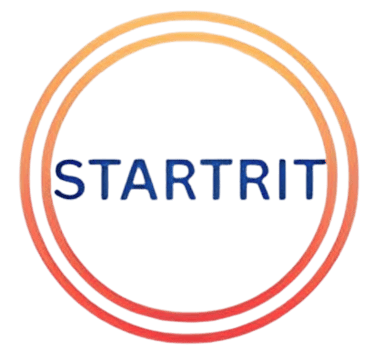Why Cloud Marketplaces Are Quietly Redefining the Future of Software Sales
Cloud marketplaces like AWS, Azure, and GCP are revolutionizing software sales and procurement. Discover how SaaS vendors and channel partners can thrive in this new digital sales ecosystem.
Venkata Ram C. R.
4/27/20254 min read


If you think cloud marketplaces are just glorified app stores, it’s time for a serious rethink. What’s happening right now across AWS Marketplace, Azure Marketplace, and Google Cloud Marketplace isn’t just another evolution in tech — it’s a silent revolution changing the rules of cloud software sales, enterprise procurement, and SaaS marketplaces forever.
And if you're in software, SaaS, IT procurement, or even cloud channel partnerships, understanding this shift isn't optional anymore — it's mission critical.
A Quiet Storm: How Cloud Marketplaces Became the New Enterprise Highway
Over the last few years, cloud marketplaces have evolved from niche procurement tools into essential revenue engines for SaaS vendors and cloud-based service providers. In fact, a recent report revealed that 63% of SaaS companies now acquire new customers through cloud marketplaces, and a staggering 22% report generating over 20% of their total revenue from these platforms.
Palo Alto Networks' Vice President, Prem Iyer, captured it perfectly: "It's not where the puck is heading. It's where the puck is now."
In simple terms? Enterprises are no longer treating cloud marketplaces as "nice to have" — they’re the backbone of every competitive cloud-based procurement strategy.






Final Thought: Adapt or Miss the Bus
We’re standing at a strategic crossroads.
The traditional direct sales models are being rewritten. Cloud marketplaces are no longer a “trend.” They’re becoming the dominant infrastructure behind enterprise procurement.
The winners? SaaS vendors who integrate, automate, and co-sell effectively. Procurement teams who embrace cloud-based procurement strategies. Channel partners who evolve from resellers to orchestrators in the expanding universe of SaaS marketplaces.
The rest? They’ll be wondering where their customers went.
Your next big deal might not start with a cold call or an RFP. It might start with a click inside a cloud marketplace. Are you ready for that future?
The Flip Side: Challenges Nobody Warned You About
Sure, cloud marketplaces sound like a fairytale. But under the hood, there’s friction too.
Procurement leaders flagged several real pain points in recent surveys:
Limited supplier performance visibility — critical metrics can be masked
Customization challenges — standard listings don’t always meet enterprise needs
Transaction fees — for SMEs especially, marketplace commission rates can sting
Manual processes — listing, updating, and optimizing still isn’t seamless
Bottom line: cloud marketplaces supercharge procurement, but don’t eliminate the need for careful vendor assessment.
If you’re an ISV, MSP, or channel partner, just getting listed won’t cut it. You need a real cloud-based procurement strategy that includes differentiated listings, private offers, co-sell initiatives, and robust CRM integrations.
Where It’s All Headed: 2025 and Beyond
Looking forward, here’s what’s coming:
$50 billion in cloud marketplace sales projected by end of 2025
Marketplace-first GTM models will become the new normal
Private offers and tailored contracts will dominate enterprise buying
ISVs who master co-sell motions with AWS, Azure, and GCP will lead
Enterprise procurement teams will expect SaaS marketplaces to match Amazon-like ease
And here’s a thought to chew on: Cloud marketplaces are already expanding beyond IT. Sectors like manufacturing, healthcare, and food services are building their own marketplace ecosystems. Today it’s SaaS. Tomorrow, it might be ERP systems, cybersecurity stacks, or HR software — all driven by cloud-based procurement models.
What Changed? And Why It Matters More Than You Think
Let’s be real. Traditional enterprise software buying used to be a nightmare: endless demos, months of negotiation, slow procurement, tangled compliance hurdles. But in the cloud era, organizations have massive cloud spending commitments they must use — or risk wasting millions.
Cloud marketplaces offer the perfect fix:
One-click cloud software sales that align with committed cloud budgets
Pre-vetted security and compliance (goodbye, 200-question security forms!)
Flexible private offers that allow custom pricing and enterprise-specific deals
One bill for everything — software, infrastructure, services
For procurement leaders and CIOs alike, it’s a dream come true. These cloud-based procurement strategies are not just convenient — they’re essential.
And here’s a kicker most people miss: Marketplace deals close 40% faster and are 80% larger on average compared to traditional sales channels. That's not hype. That’s straight from AWS Marketplace leaders.
The Big Breakthrough: Channel Partners are Taking Over
Here’s something fresh — and most blogs won’t tell you this yet.
Until recently, hyperscaler marketplaces were seen as direct sales avenues. But new research from Canalys (now part of Omdia) reveals a radical shift: by 2027, more than 50% of all hyperscaler marketplace sales will happen via cloud channel partners.
That means managed service providers (MSPs), resellers, and system integrators are no longer fighting cloud marketplaces — they’re embedding themselves within them. This change is transforming how enterprise procurement and SaaS partnerships function.
AWS CPPO (Channel Partner Private Offers), Azure Multiparty Private Offers, and GCP’s expanding co-sell programs are fueling this trend. Smart SaaS vendors are already leveraging these tools to stay competitive in the cloud software sales environment. Distributors are also adapting by aligning their strategies with this new wave of cloud-based procurement.
It’s an entirely new partner ecosystem emerging — in real-time.
